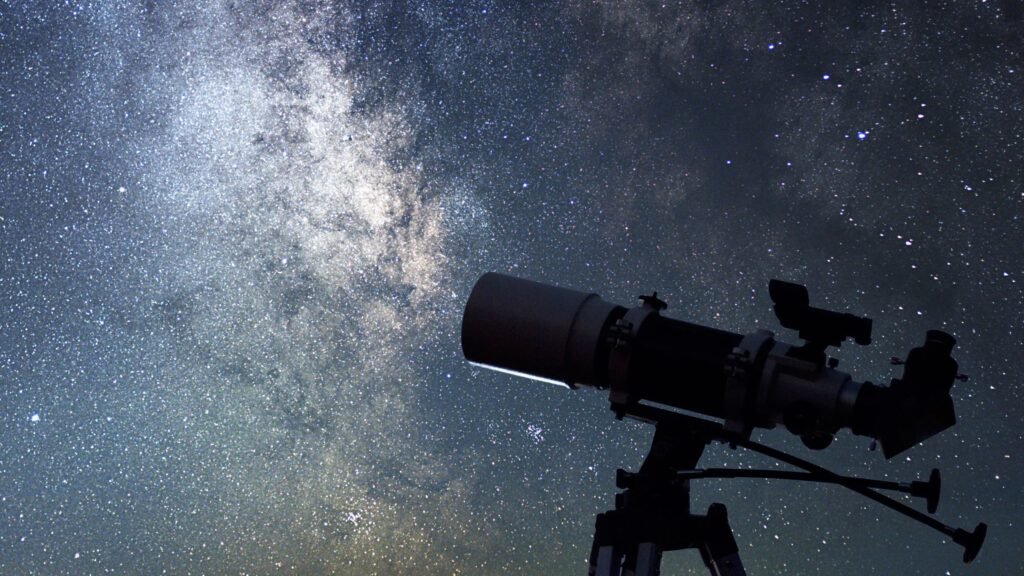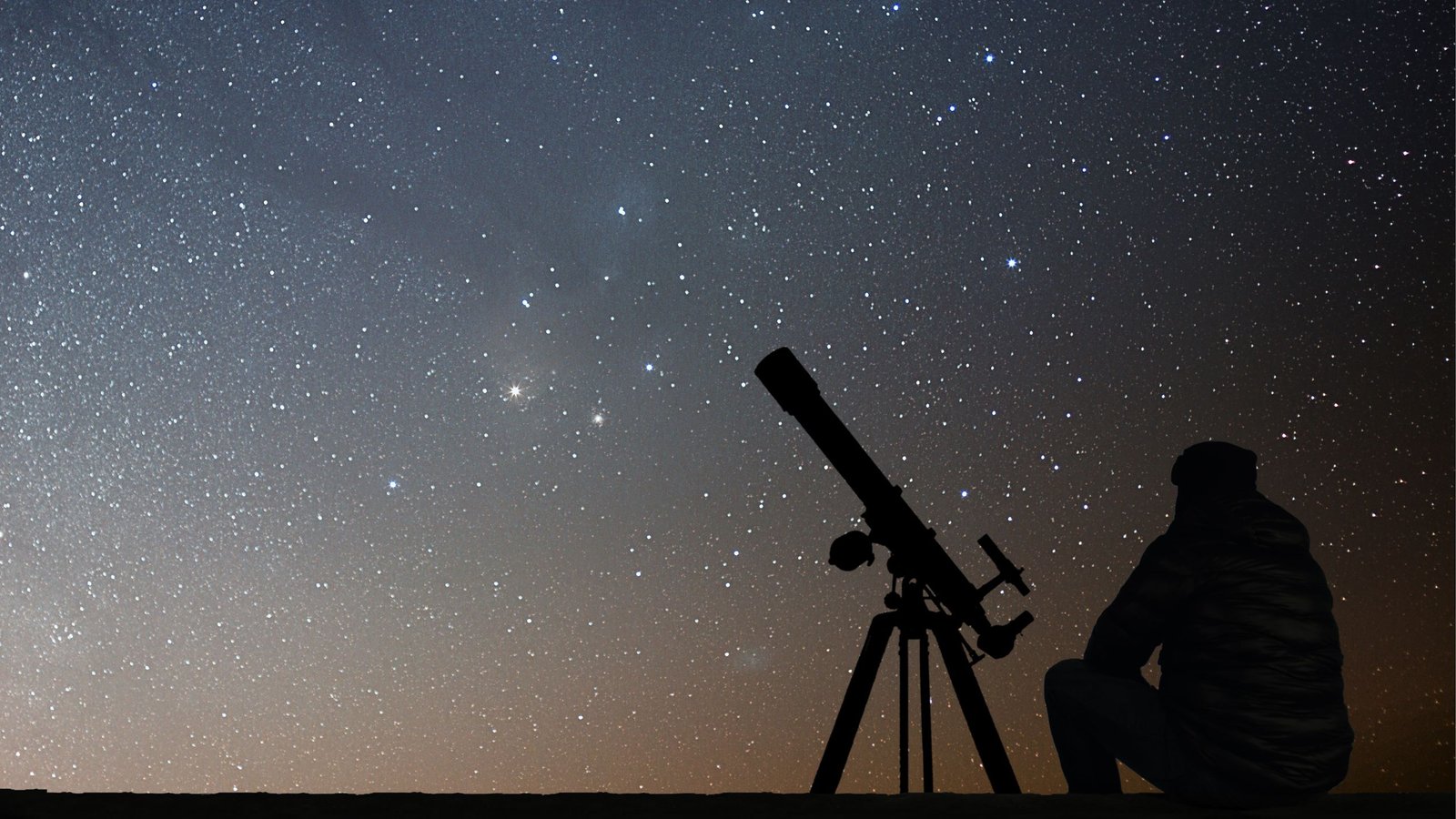Astronomy offers an awe-inspiring glimpse into the vastness of space, revealing a night sky filled with stars, planets, and celestial phenomena. Astronomy for beginners does not require much more than curiosity and a clear night sky. Starting with the naked eye, new stargazers can learn to navigate the constellations, track the movement of the planets, and appreciate the moon’s craters and seas. As one’s interest grows, branching into the use of binoculars or a telescope can enhance the experience, unveiling finer details and farther celestial bodies.

Advancing further, enthusiasts may explore the field of astrophotography, capturing the night sky’s majesty through a camera lens. For those seeking a sense of community and shared wonder, local astronomy clubs and online forums are excellent resources for advice, organized viewing events, and educational outreach. These communities provide a network of support for beginners, answering questions and sparking discussions about the latest astronomical discoveries and events. As beginners progress, they often find that astronomy is not just a hobby but a lifelong pursuit of knowledge and discovery, with the night sky offering endless opportunities for exploration.
Key Takeaways
- Starting in astronomy can be as simple as observing the night sky with the naked eye.
- Utilizing tools like telescopes can enhance the detail and reach of celestial observations.
- Joining astronomy communities offers support and further learning for beginners.
Table of Contents
Getting Started in Astronomy for Beginners

Entering the world of astronomy begins with obtaining the right equipment and developing an understanding of the night sky. Beginners should learn the basics to better appreciate the celestial wonders.
Choosing Your Equipment
Purchasing binoculars or a telescope marks the first step into stargazing. Astronomy for beginners often starts with binoculars, as they are affordable and user-friendly, offering a wider field of view to navigate the night sky. A telescope, however, provides a more detailed exploration of celestial objects. The choice of a telescope is critical; beginners should opt for a model that balances quality with simplicity. Consider refractor telescopes for their ease of use and maintenance.
Understanding the Night Sky
Familiarization with the night sky is essential for budding astronomers, and this is where astronomy for beginners becomes particularly important. It involves recognizing major constellations, learning to pinpoint planets, and understanding celestial movements. A planisphere can be an invaluable tool for beginners, as it displays the visible constellations at any time of year. Using star charts or astronomy apps can also enhance one’s ability to identify patterns and track stellar changes.
Learning the Basics
Grasping astronomy basics requires reading and practice, making astronomy for beginners an essential starting point. Start with fundamental concepts such as light pollution, telescope optics, and astronomical events. Hands-on experience is as valuable as theoretical knowledge. Attending local astronomy club meetings or star parties offers practical learning opportunities and the chance to connect with experienced astronomers who can guide novices through the intricacies of the field.
Observing the Celestial Sphere

The celestial sphere is an imaginary projection of the Earth’s surface into space, upon which all celestial bodies are assumed to lie. Beginners interested in astronomy will find observing this sphere crucial for understanding the positions and movements of the stars, planets, and other celestial objects.
Navigating the Moon and Planets
When one steps into the world of astronomy, observing the moon and planets presents a captivating starting point for astronomy for beginners. Each planet in the solar system follows a well-defined path along the celestial sphere, known as the ecliptic, making them predictable in their movements and positions. By familiarizing oneself with the ecliptic, a person can reliably locate planets with the naked eye or with the aid of a telescope. The Moon, our closest celestial neighbor, also follows this path, providing an everchanging observation target through its monthly phases.
To start navigating:
- Locate the moon in the night sky; its bright presence often makes it an ideal reference point.
- Use a star chart or an application to determine which planets are visible at your observing time and date.
- Track the movement of planets over multiple nights to understand their path along the ecliptic.
Discovering Stars and Constellations
The fabric of the night sky is woven with stars that form patterns known as constellations. Understanding and identifying these star patterns allows one to observe distinct regions of the night sky and trace the rich narratives of mythology ascribed to them. By acquiring skills to identify major constellations, an observer is also equipped to pinpoint specific stars and notable deep-sky objects within those constellations.
For star and constellation discovery:
- Begin with prominent constellations like Ursa Major or Orion, which can act as celestial signposts to navigate to other stars and constellations.
- Use the concept of apparent magnitude, which measures a star’s brightness as seen from Earth, to discern star patterns and key astronomical objects.
In embracing these practices, beginners become adept at observing the celestial sphere and unraveling the mysteries of the universe.
Deep Space Exploration

Entering the realm of deep space exploration offers enthusiasts a chance to observe some of the most fascinating and intricate structures in the universe, such as galaxies and nebulae. Armed with telescopes and guided by curiosity, observers can unlock the secrets of various celestial objects that reside far beyond our own solar system.
Galaxies and Nebulae
Galaxies are massive systems composed of stars, stellar remnants, interstellar gas, dust, and dark matter, bound together by gravity. The Milky Way, for example, is the galaxy that contains our Solar System. Distinct in structure, galaxies are categorized mainly as spiral, elliptical, or irregular. They are often observed for their spectacular formations and the information they provide about the formation and evolution of the cosmos.
Nebulae represent the clouds of dust and gas where stars are born or where they meet their ultimate fate. Observing nebulae like the Orion Nebula or the Crab Nebula allows scientists to study the lifecycle of stars. A larger telescope offers a detailed view and the use of filters enhances the visibility of specific wavelengths of light emitted by these celestial nurseries.
Unlocking the Mysteries of Other Celestial Objects
Deep-sky objects include a broader category of celestial bodies such as star clusters, supernova remnants, and elusive black holes. Star clusters are groups of stars that are gravitationally bound; two main types are open clusters, which are loosely arranged, and globular clusters, which are densely packed.
Black holes, regions in space where gravity is so strong that nothing, not even light, can escape from it, represent the frontiers of astrophysical research. Their presence is inferred by the effect they have on their surroundings. Understanding black holes helps astronomers to grasp the concept of spacetime and the extreme conditions where the laws of physics are pushed to their limits.
Practical Guide to Astrophotography

Astrophotography enables one to capture the beauty of celestial events, but it demands specific equipment and techniques. This practical guide, designed for astronomy for beginners, provides foundational knowledge to begin their journey in photographing the cosmos.
Capturing the Cosmos
They must consider the impact of light pollution when planning to photograph the night sky, as it can significantly affect the clarity and quality of images. To minimize its effect, one should seek out locations with dark skies away from city lights. Celestial events, like meteor showers or lunar eclipses, offer unique opportunities for astrophotography and require careful timing to capture.
- Best times for astrophotography:
- New Moon phase for darker skies
- During scheduled meteor showers for dynamic images
- When the Milky Way core is visible, typically from March through October
Equipment and Techniques for Beginners
For those starting in astrophotography, a basic setup can consist of a DSLR or mirrorless camera with manual mode capability, a sturdy tripod, and a fast, wide-angle lens. A remote shutter release can help prevent camera shake during long exposures.
- Recommended equipment for beginners:
- Camera: DSLR or mirrorless with manual mode
- Lens: Wide-angle (14mm-24mm), fast aperture (f/1.8 – f/2.8)
- Mount: Sturdy tripod, optional star tracker for long exposures
Beginners should master fundamental photography skills like focusing in low light and understanding the exposure triangle—shutter speed, aperture, and ISO. To avoid star trails, utilize the “500-rule,” which suggests setting the shutter speed to 500 divided by the focal length of the lens.
- Key techniques to practice:
- Focusing: Use manual focus, aim for a bright star
- Exposure settings: Start with the “500-rule” and adjust ISO accordingly
- Composition: Incorporate interesting foregrounds to add depth
Getting acquainted with the basics of astronomy for beginners will position one well to take stunning photos of the night sky, even in areas with some light pollution. Remember, astrophotography requires patience and practice, so take time to become comfortable with the equipment and the shooting process.
Joining the Astronomy Community

Embarking on a journey into amateur astronomy, particularly for those new to the field, is significantly enriched by connecting with others who share your interest. Through astronomy clubs and a range of events and resources, beginners can gain valuable insights, access tools like star charts, and receive guidance from experienced astronomers. This community aspect is a crucial part of Astronomy for Beginners, helping novices to quickly learn and grow in their new hobby.
Astronomy Clubs and Societies
Astronomy clubs and societies offer an excellent starting point for anyone interested in the skies. They typically provide a range of benefits, including:
- Networking: The chance to meet and engage with fellow astronomy enthusiasts.
- Resources: Access to newsletters and monthly sky guides filled with current astronomical events and stargazing tips.
- Equipment: Opportunities to use or rent telescopes and other astronomy gear.
Most astronomy clubs also have a presence online, where members may sign up through an email list to receive updates and event notifications.
Events and Resources for Amateur Astronomers
Amateur astronomers have access to various events and resources that can deepen their understanding of astronomy. Key offerings include:
- Observing Nights: Organized stargazing events often held at dark sky locations.
- Workshops & Talks: Educational sessions about celestial phenomena, telescope handling, and astro-photography.
In addition to in-person activities, numerous online resources are available:
- Sky Maps: Interactive sky maps or stargazing apps provide real-time star charts.
- Monthly Sky Guide: A guide to the best celestial objects to observe each month.
By participating in these events and utilizing these resources, beginners in the field of astronomy can quickly become competent in navigating the night sky and identifying celestial bodies. This practical application is a fundamental aspect of astronomy for beginners, as it helps to solidify the knowledge gained from study and observation.
Frequently Asked Questions
In this section, astronomy beginners can find answers to some of the most common questions, aiding in building a foundational understanding and guiding their exploration of the night sky.
What are the essential concepts every astronomy beginner should understand?
A beginner in astronomy should grasp the basics of the night sky, including understanding celestial objects such as stars, planets, and galaxies. Knowledge of the night sky facts, constellations, and celestial movements is fundamental.
Which books are highly recommended for someone starting to learn astronomy?
For those starting out, utilizing the local public library can be an invaluable resource. Books that cover basic knowledge and provide guidebooks on constellations and celestial events are highly recommended.
What equipment is necessary for a beginner interested in stargazing?
Beginners don’t necessarily need expensive equipment; a pair of binoculars or a basic telescope can greatly enhance their stargazing experience. Additionally, having a star chart or an app to help identify celestial objects can be beneficial.
Can you recommend some beginner-friendly software for exploring astronomy on Windows 10?
There are many software options available for Windows 10 that are suitable for beginners. Stellarium is a free, open-source planetarium for your computer that depicts a realistic sky in 3D, just like what one would see with the naked eye, binoculars, or a telescope.
How does one begin pursuing astronomy as a hobby?
Initiating an astronomy hobby begins with simply looking up at the night sky and cultivating curiosity. Beginners should also consider joining local astronomy clubs or online communities to connect with more experienced astronomers.
Are there any free resources or courses available for beginners to learn astronomy?
Yes, there are numerous free resources available for beginners, including online courses, weekly guides like “This Week’s Sky at a Glance,” and frequently asked questions on astronomy websites that can provide valuable information to newcomers.



